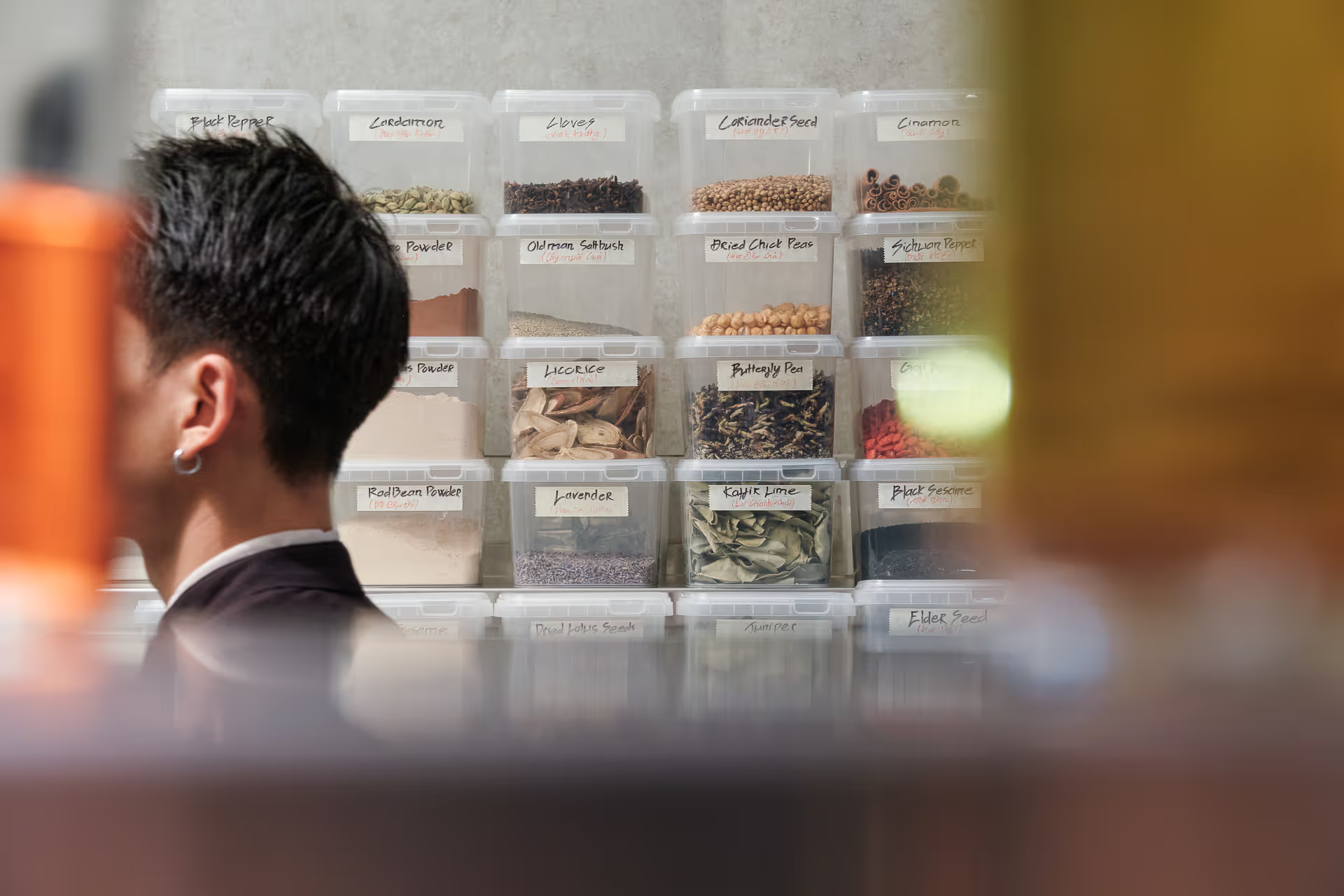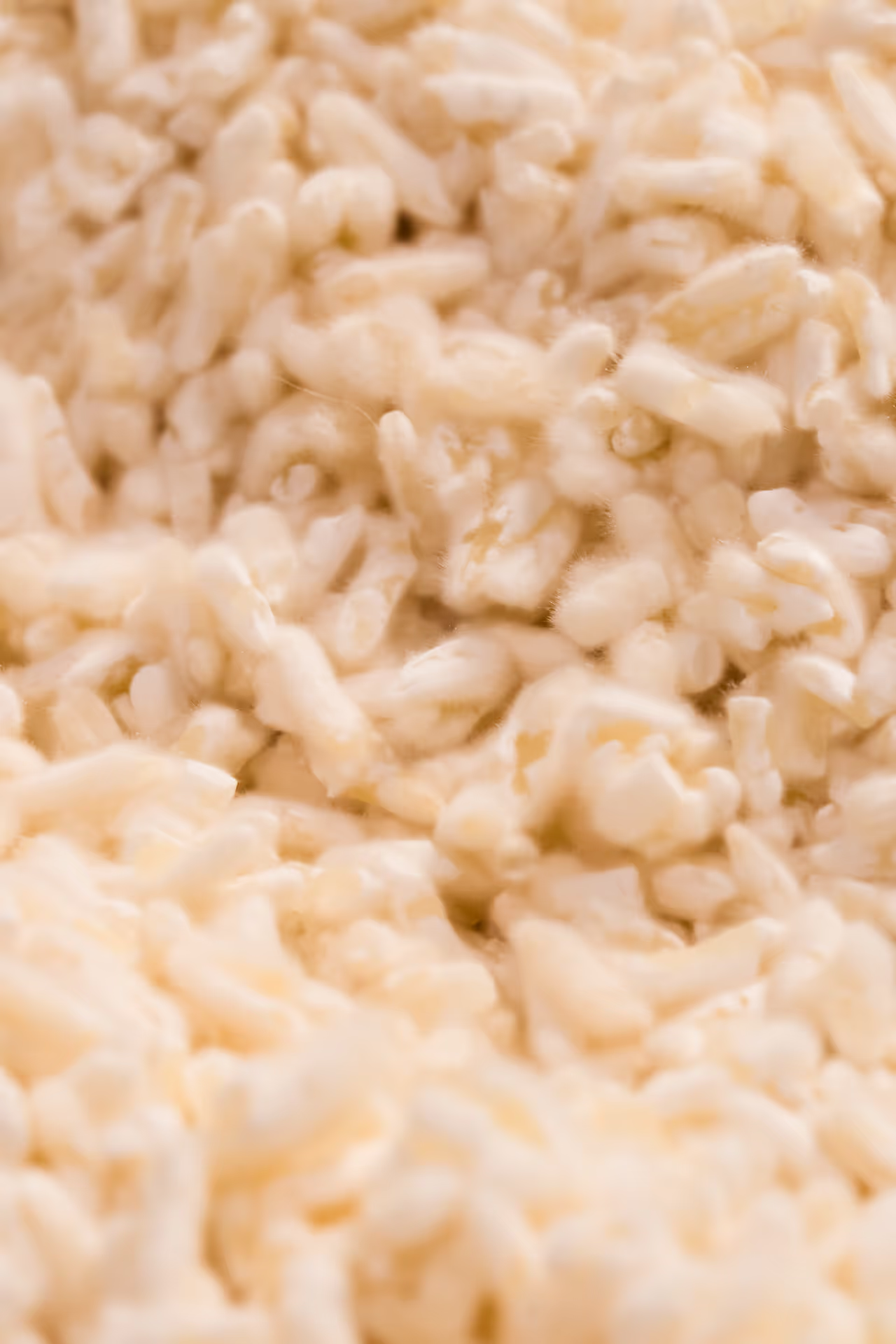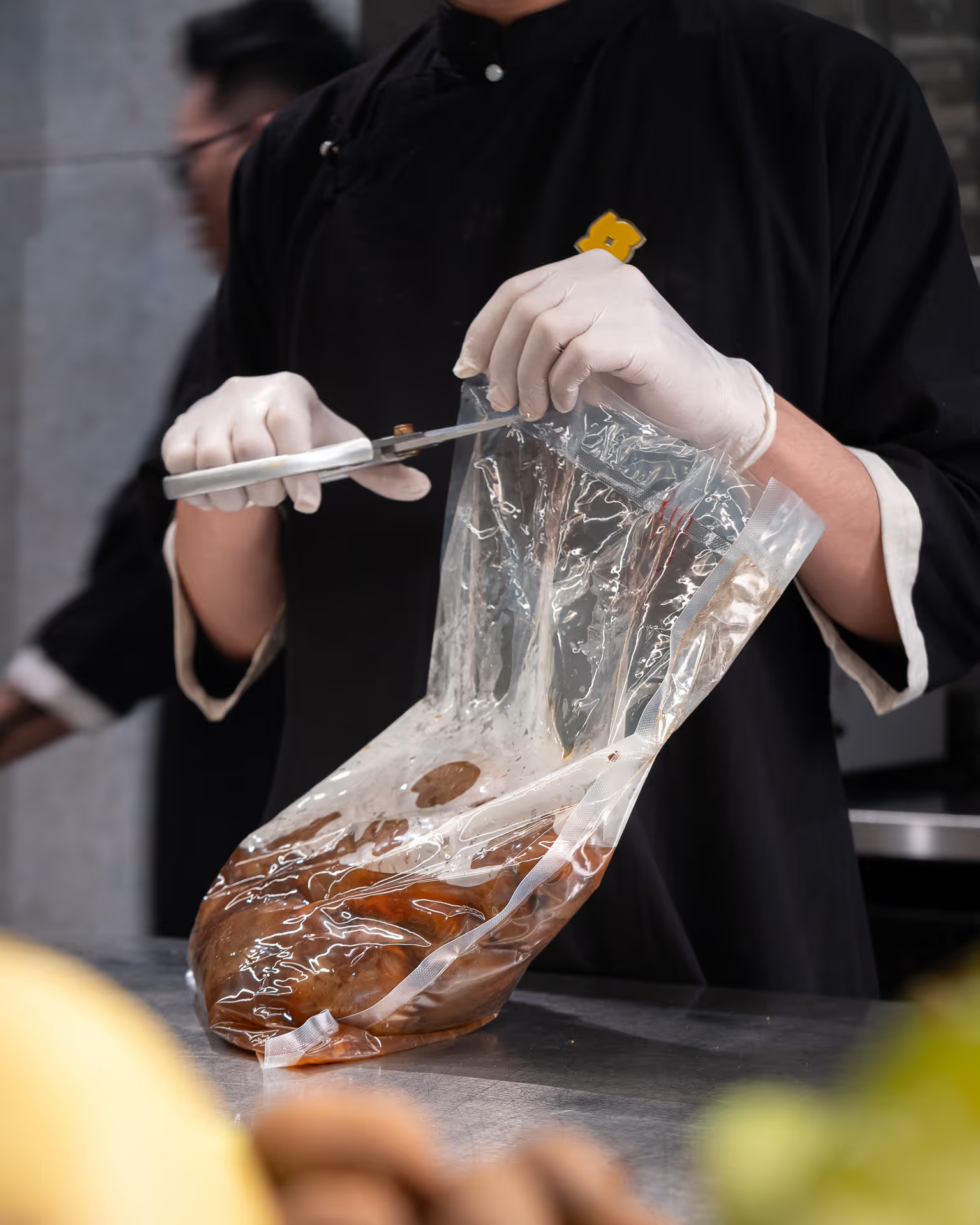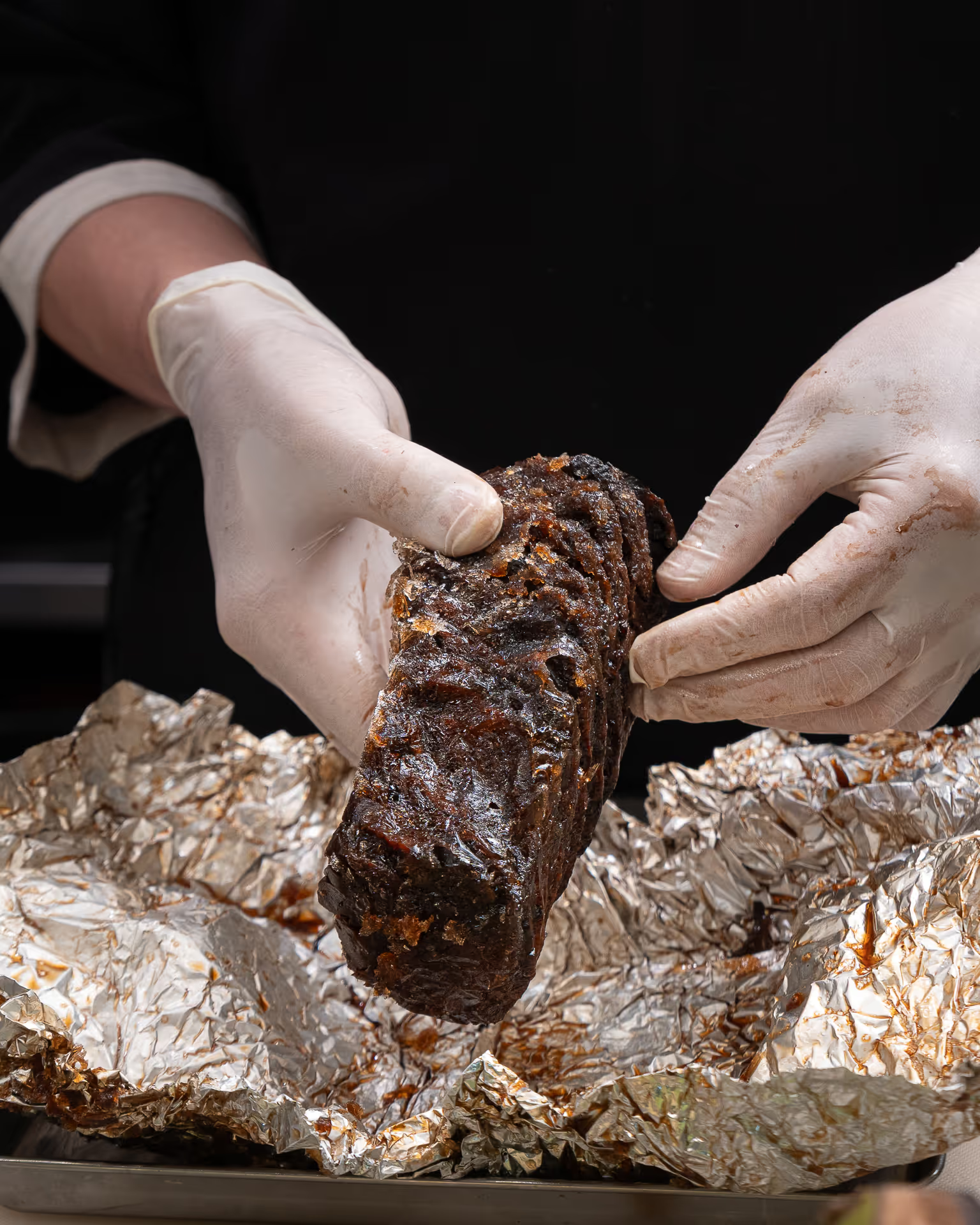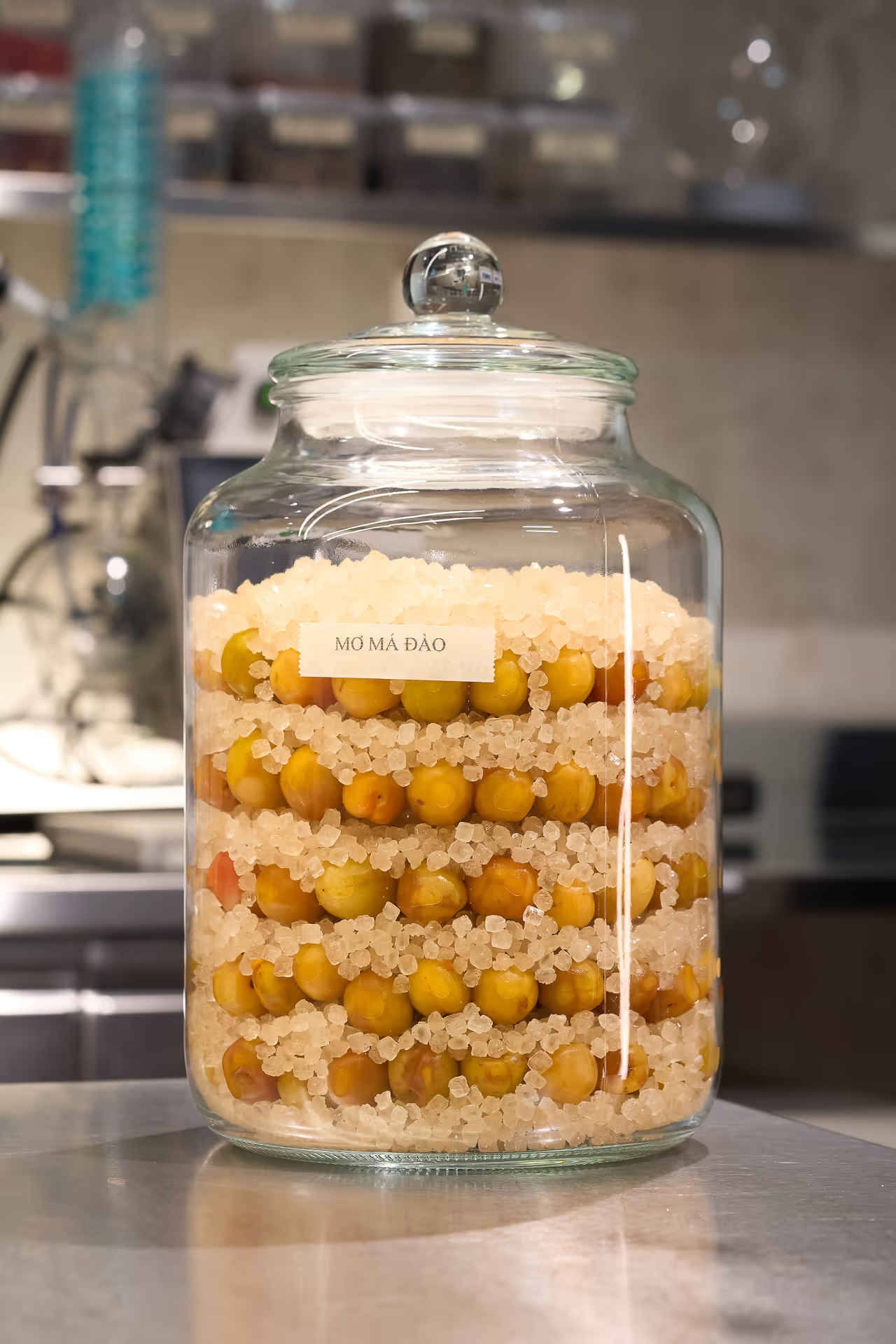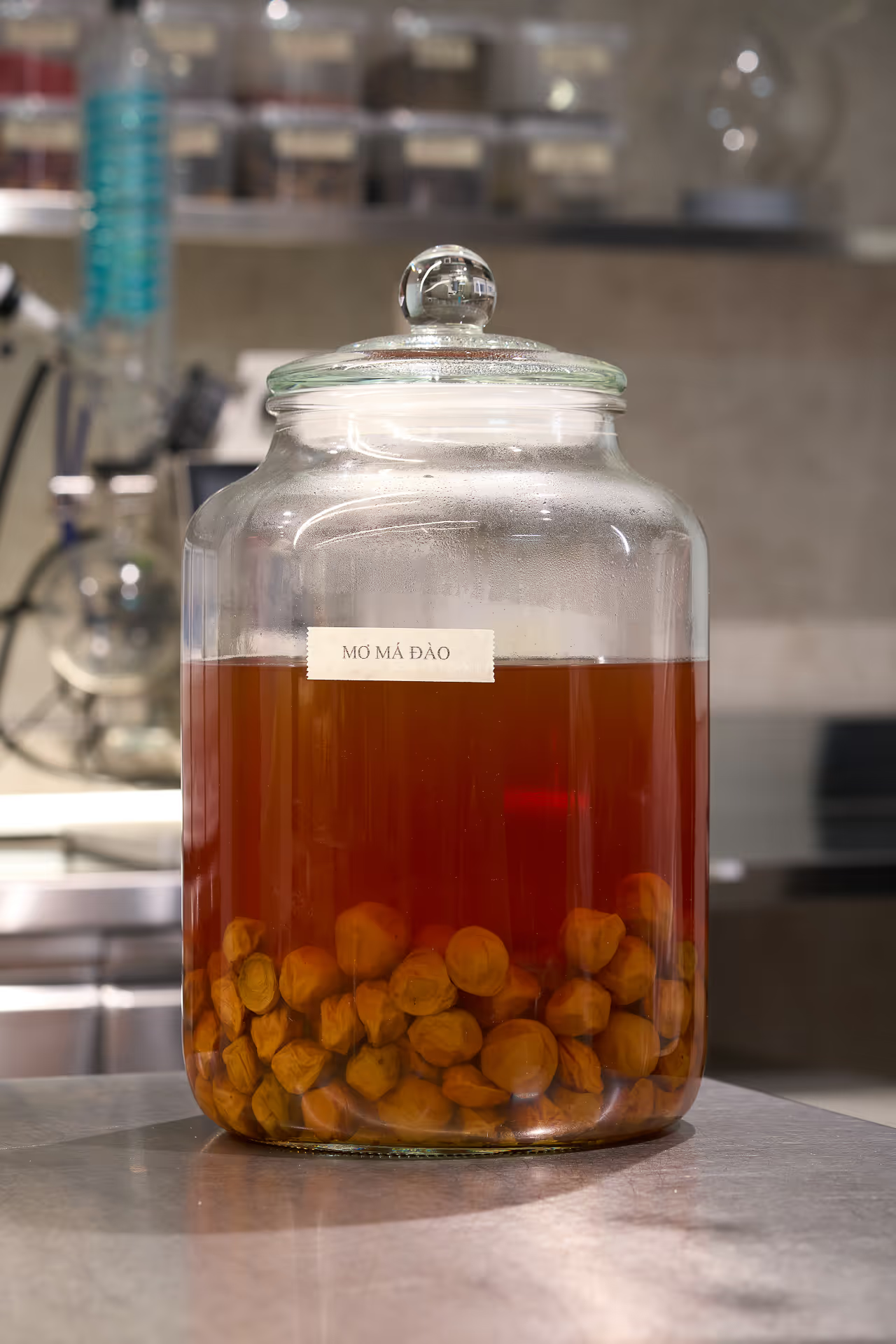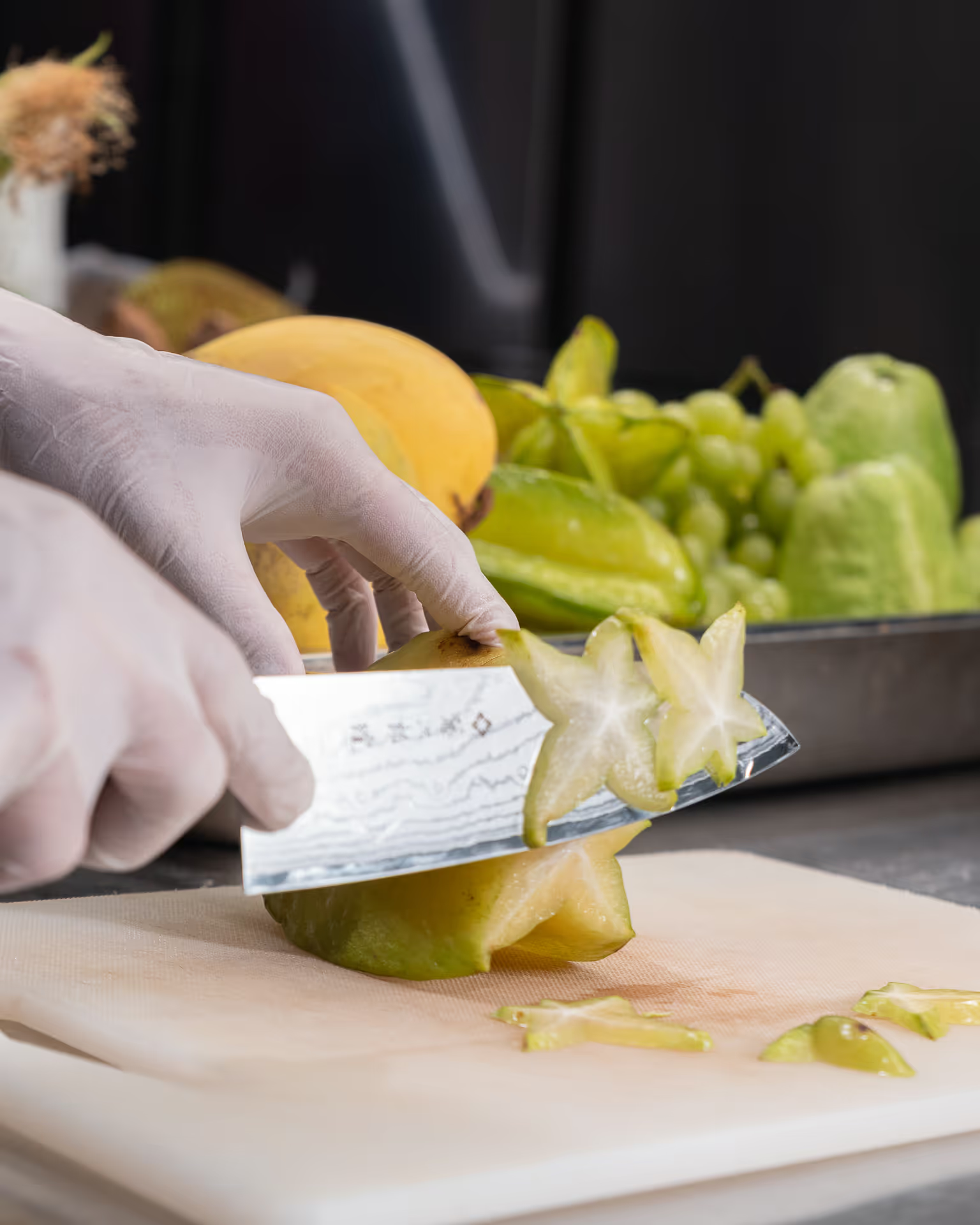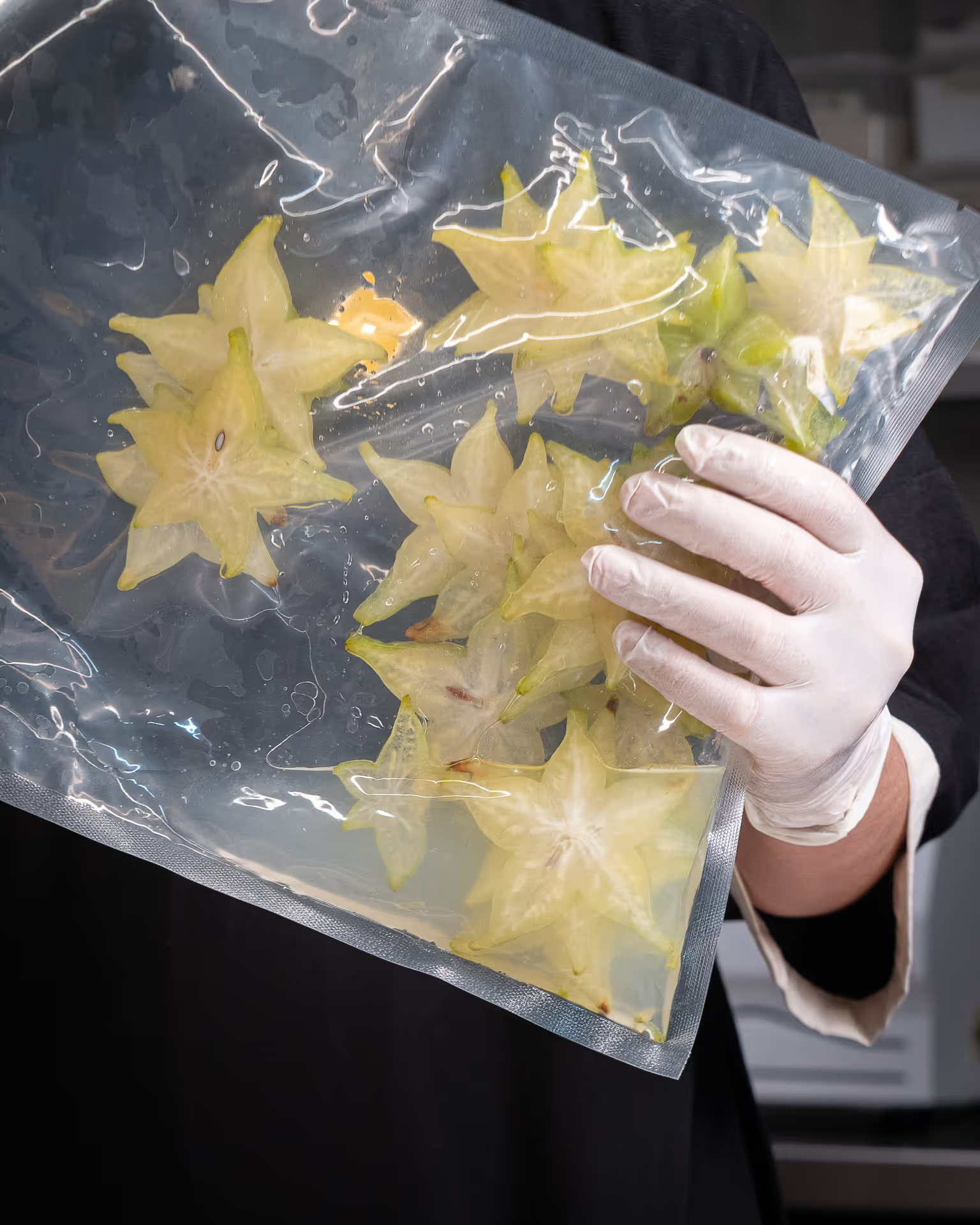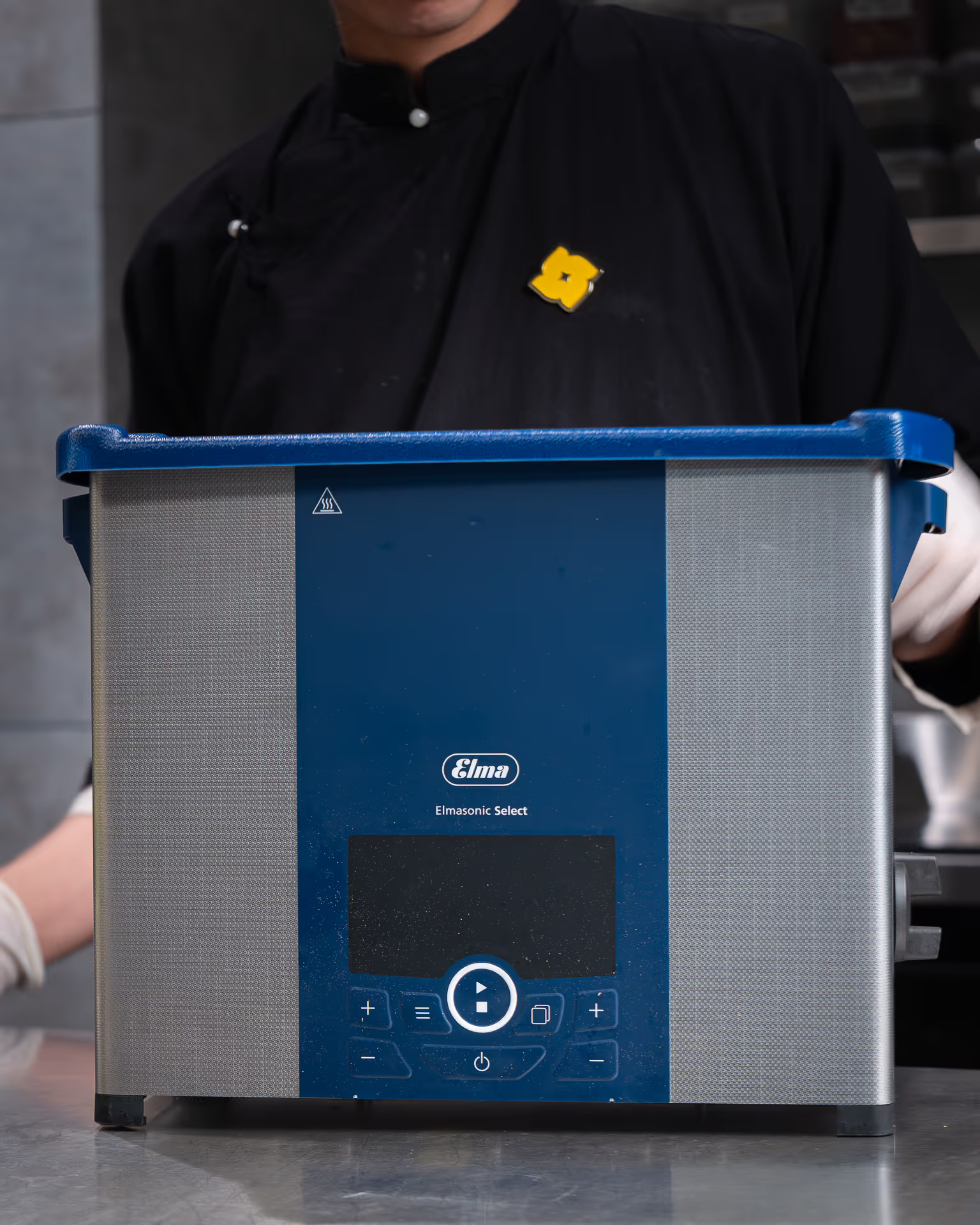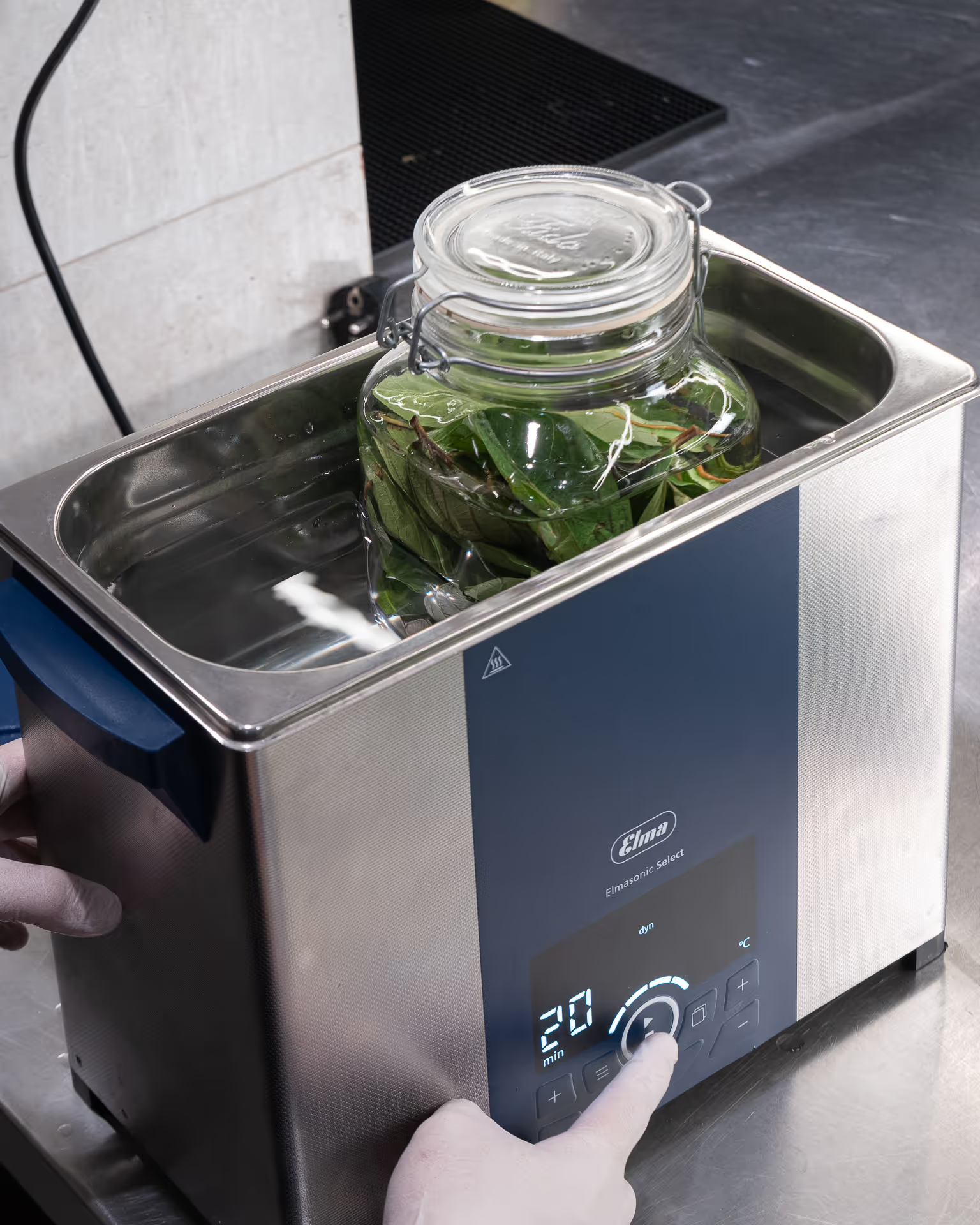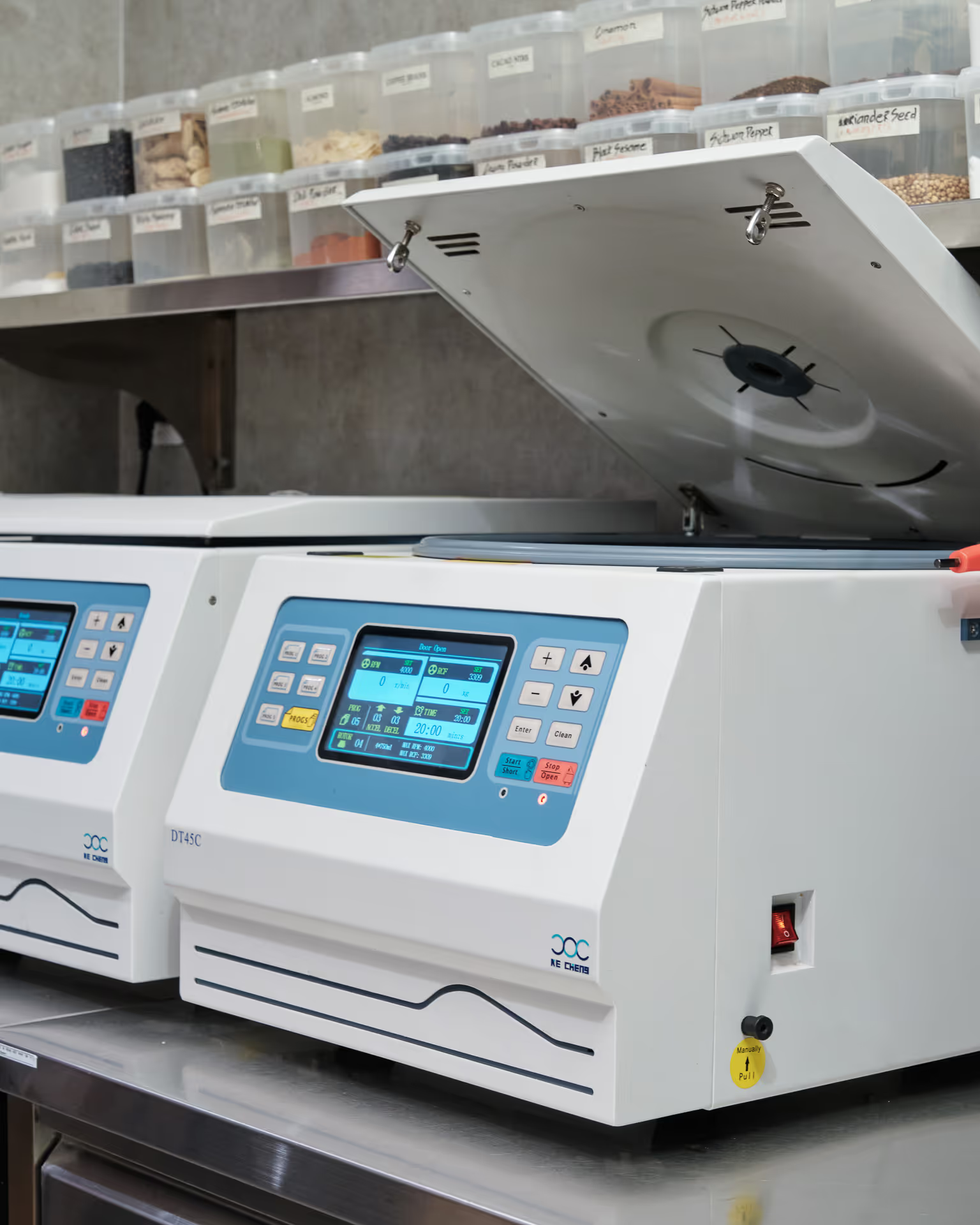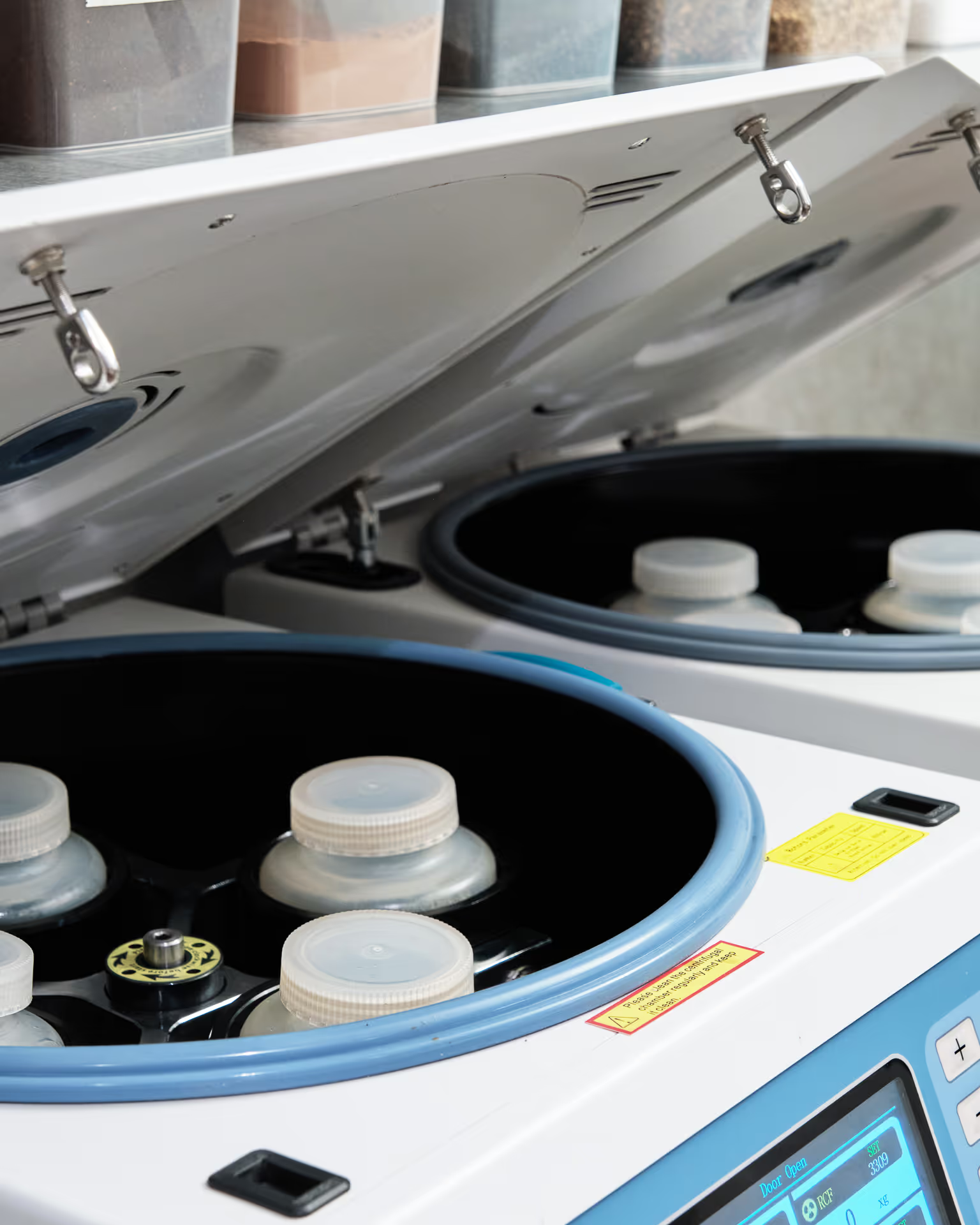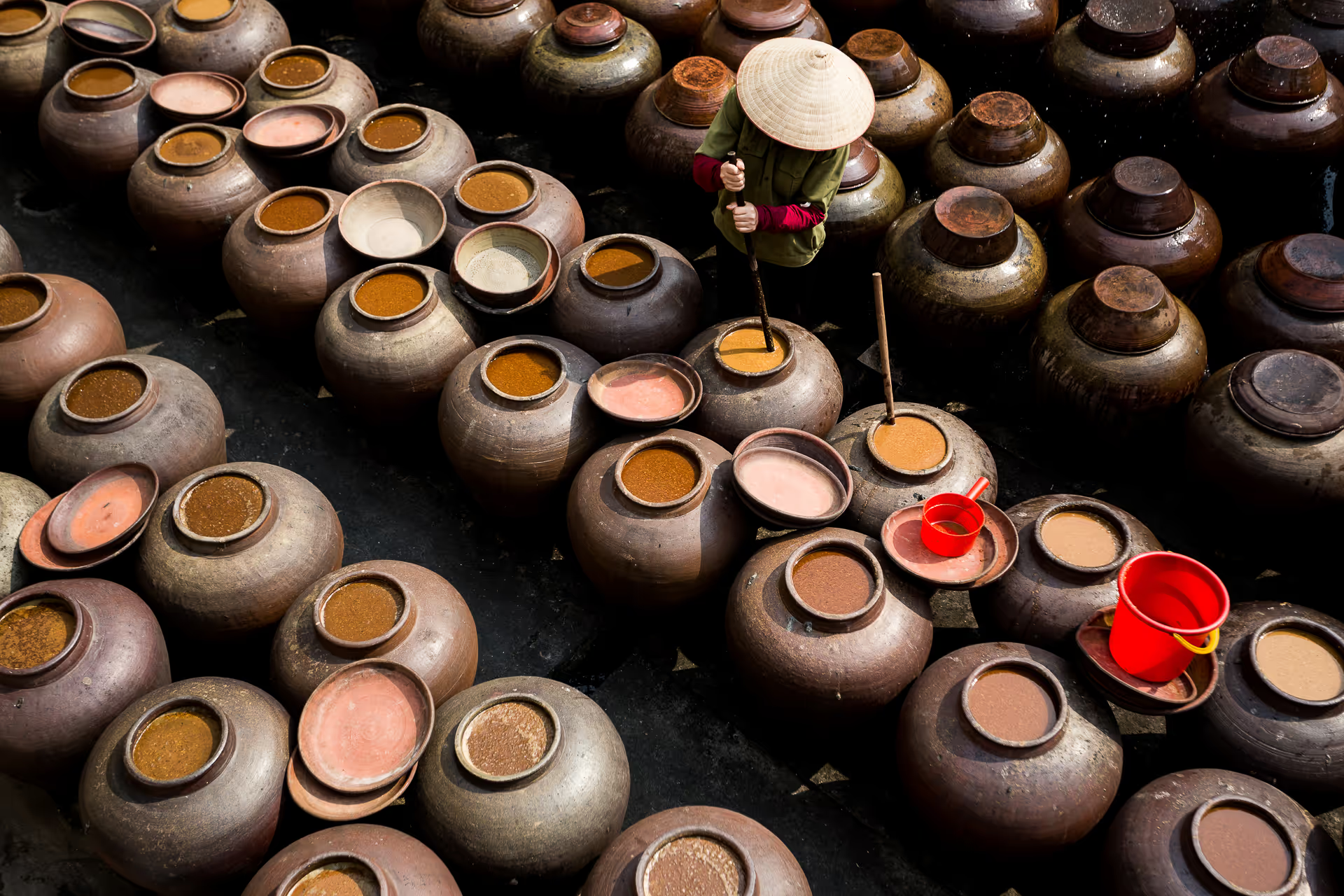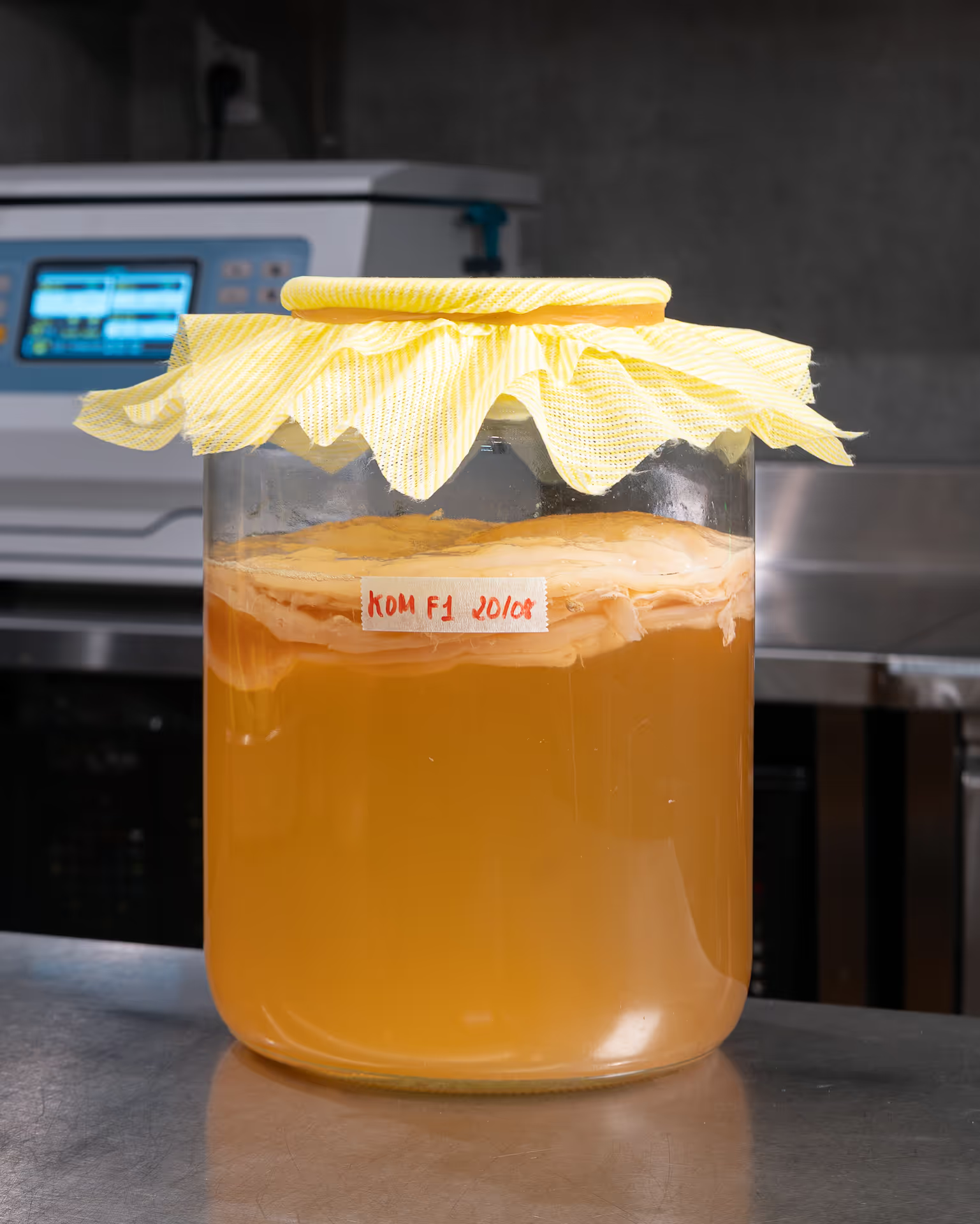
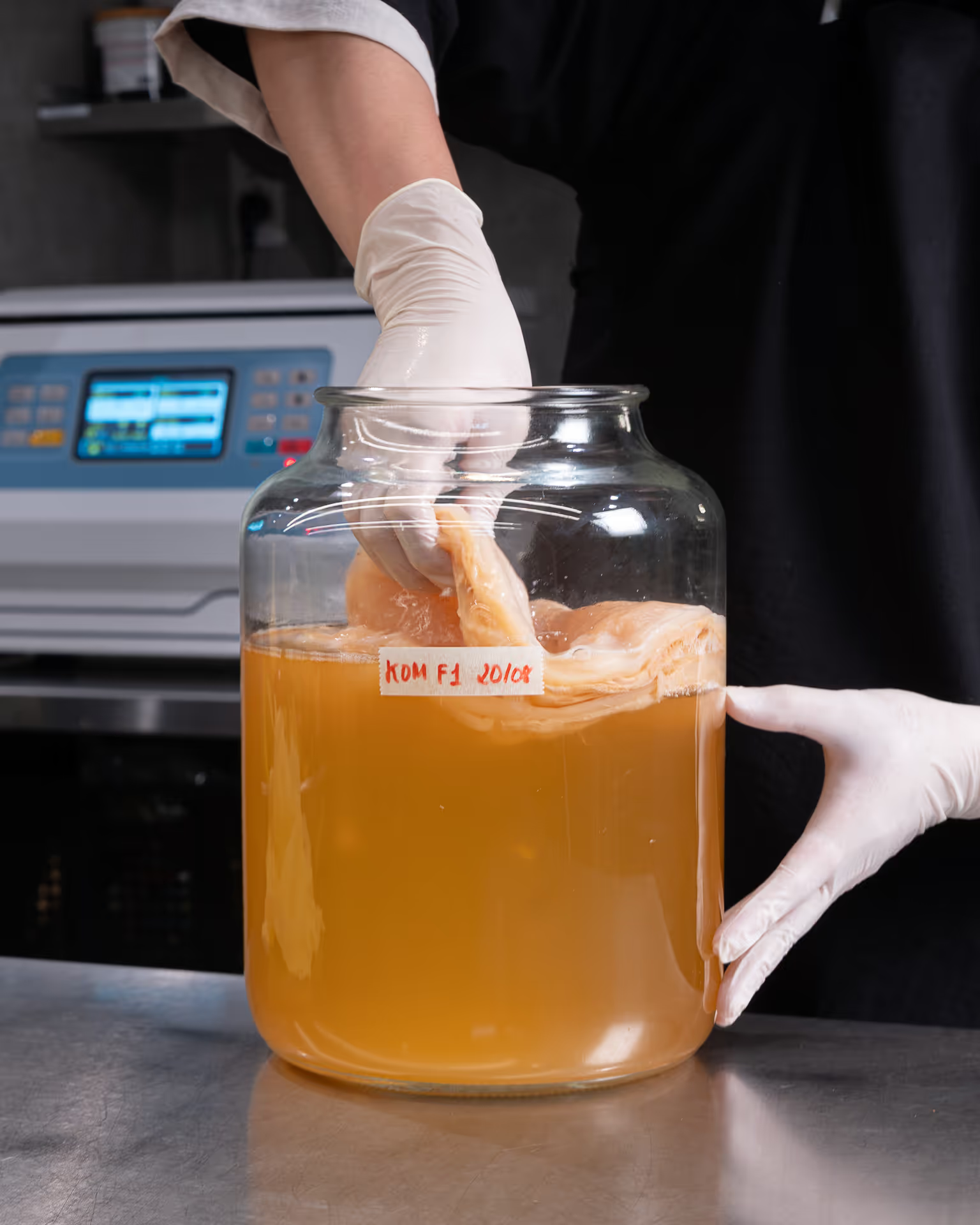
Nguyên liệu chính
1000ml boiled and cooled water
30g Redshan Ancient Tea
105g sugar
100g scoby
30g Redshan Ancient Tea
105g sugar
100g scoby
Cách làm
Steep the tea in boiled and cooled water for 30 minutes. Strain out the tea leaves and mix in sugar until fully dissolved. Allow the tea to cool completely, then divide it evenly into sterilized jars.
Once cooled, add a Scoby to each jar, cover with a towel or napkin over the mouth of the jar, and let ferment at room temperature.
When the kombucha reaches a pH of 3.5–4, it is ready to use.
Once cooled, add a Scoby to each jar, cover with a towel or napkin over the mouth of the jar, and let ferment at room temperature.
When the kombucha reaches a pH of 3.5–4, it is ready to use.
Nguyên liệu chính
1000ml Kombucha
20g Redshan Ancient Tea
100g Doi seeds
20g Redshan Ancient Tea
100g Doi seeds
Cách làm
Infuse tea and Doi seeds into Kombucha mixture, then continue fermenting for 2–3 days.
After fermentation, strain out the solids, and the kombucha is ready to use.
After fermentation, strain out the solids, and the kombucha is ready to use.
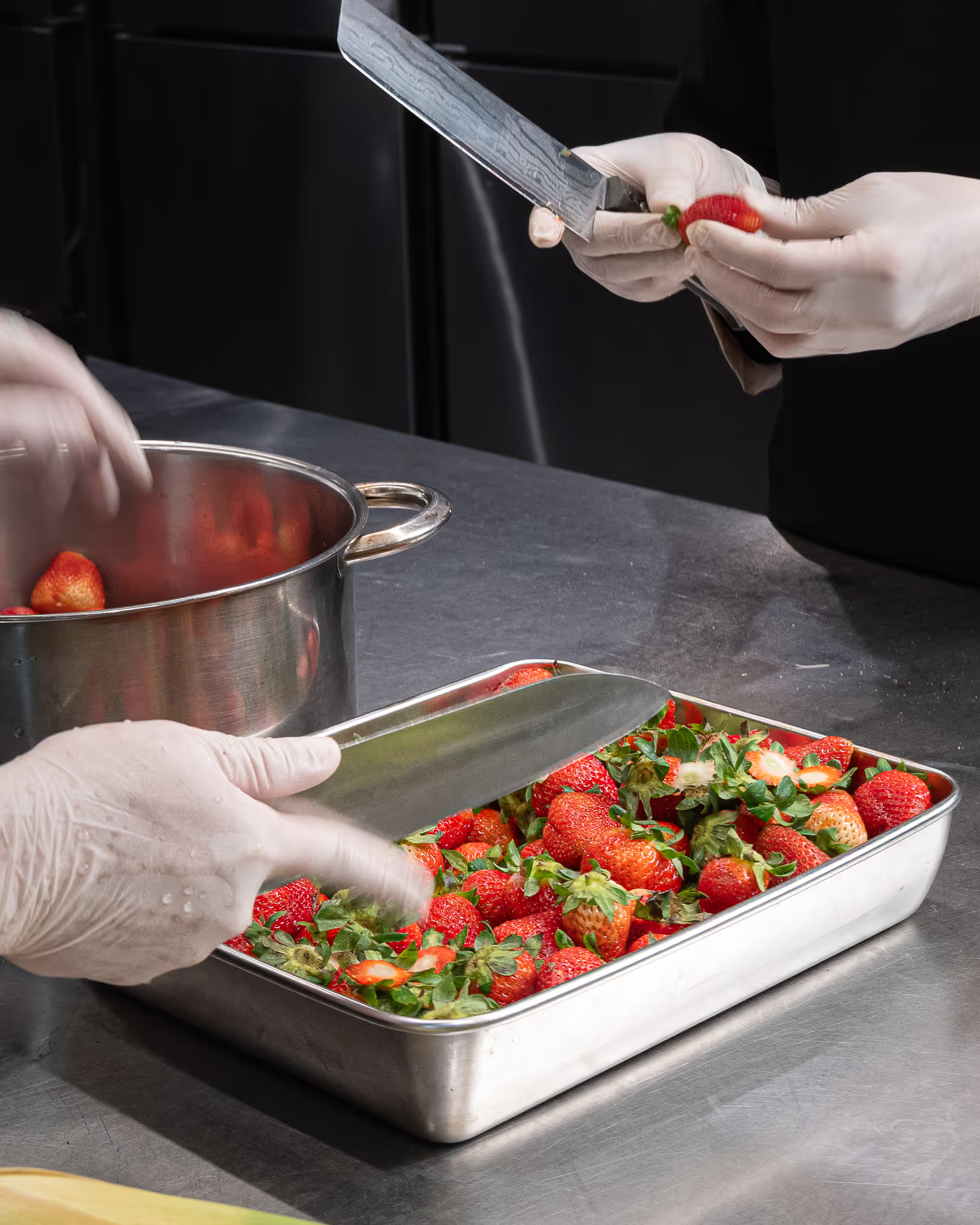
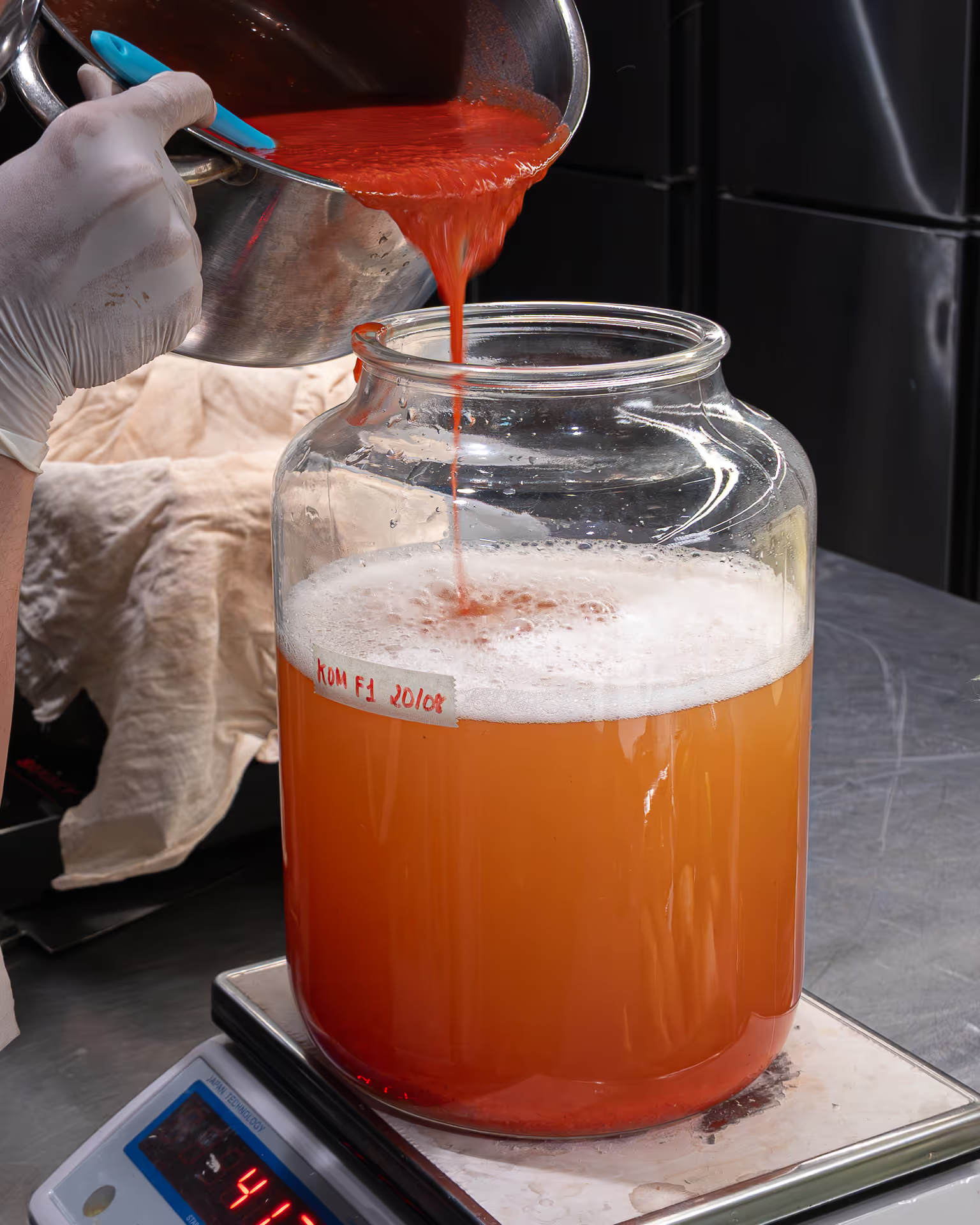
Nguyên liệu chính
1000ml boiled and cooled water
30g Redshan Ancient Tea
105g sugar
100g scoby
30g Redshan Ancient Tea
105g sugar
100g scoby
Cách làm
Steep the tea in boiled and cooled water for 30 minutes. Strain out the tea leaves and mix in sugar until fully dissolved. Allow the tea to cool completely, then divide it evenly into sterilized jars.
Once cooled, add a Scoby to each jar, cover with a towel or napkin over the mouth of the jar, and let ferment at room temperature.
When the kombucha reaches a pH of 3.5–4, it is ready to use.
Once cooled, add a Scoby to each jar, cover with a towel or napkin over the mouth of the jar, and let ferment at room temperature.
When the kombucha reaches a pH of 3.5–4, it is ready to use.
